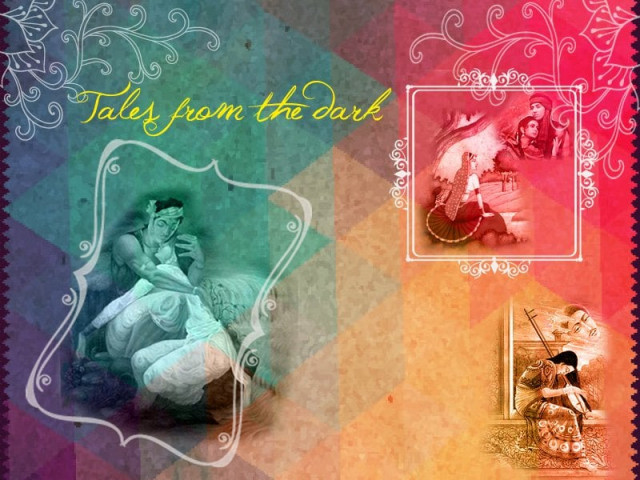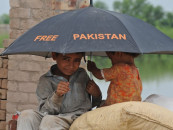The evolution of folklore
Saif Asif Khan explores why our love stories are always so tragic.

Consider the stories of Heer Ranjha, Sohni Mahiwal, Sassi Punhu and even the famous Laila Majnu and you will see that they all have sad endings.
The one thing that differentiates our traditional love stories from romantic folklore of other parts of the world is how they all, barring a few exceptions, almost always end tragically. Consider the stories of Heer Ranjha, Sohni Mahiwal, Sassi Punhu and even the famous Laila Majnu and you will see that they all have sad endings. In each of these, the ill-fated lovers either drown and die, or are poisoned and die, or go mad and die or are dramatically swallowed up by the ground in a freak earthquake and die.
My curiosity regarding this has gotten the better of me. I couldn’t help but delve into this matter further. My investigations lead me to realise that, by concluding these stories on such a dreadful note, our folklore, intentionally or otherwise, has hailed unrequited love as the highest and purest form of love! Anyone who has read the afore-mentioned stories or their depiction in local poetry would agree that the love between the two chief characters was sincere beyond doubt as they were willing to give up their lives for each other, which they eventually do. Now, imagine generation upon generation being told these stories as part of their upbringing and you will realise how they might breed an entire culture and mindset that valorises unrequited love, taking it as the truest of all emotions one might have for a member of the opposite sex. Are these stories not a tad morbid in comparison to romance tales from Europe (immortalised somewhat inaccurately in our country by Disney) wherein the prince and princess ride off into the sunset to live “happily ever after?”

What is worse than our culture celebrating the misfortune of two people who are denied “worldly bliss” is how relevant these stories are to today’s Pakistan where most young men and women are still denied the right to choose their life-partners. They remain largely at the mercy of their parents for it. It almost seems like these stories were drafted centuries ago with the foresight that Pakistani society will chart an intolerant and narrow-minded trajectory. And with sections of our society gradually regressing towards more conservatism, with freedom of choice being granted in just the elite circles, it is but natural that the hackneyed storyline of two lovers, unable to ‘make it happen,’ resonates with the majority so much. It explains the undying popularity enjoyed by the love stories, despite the passage of time.

Yet the more I thought about this, the more I believed that there had to be some other explanation. After all, these stories originated a long, long time ago — perhaps even predating the advent of Islam. It seemed impossible that the people of yore would have had the vision to predict that the idea of love will remain frowned-upon centuries down the line. So it must be a coincidence that the tales they conjured back then reflect our present day realities so well.
This was when it struck me that these stories probably valorise unrequited love for an entirely different reason: they have little to do with love between two people but are allegories for a completely different type of love, not meant to be interpreted literally. Each of the stories subliminally alludes to the mystical love between man and his Creator. Indus is, after all, the land of Sufism — a belief system with divine love as one of its basic tenets. For Sufis, man must love his Creator wholeheartedly without being united with Him in the physical sense. This is why the annual urs of Sufi saints is celebrated rather than mourned as it marks their transition into the next world and their union with the Creator. So perhaps whilst these love stories were being narrated orally to sleepy children and being absorbed into the pages of our cultural heritage, they had been celebrating an entirely other form of love altogether.

On the other hand, Sufism has been relegated to Bollywood qawwali songs and Coke Studio so we may have begun to contextualise our folk tales differently as the lens through which we are viewing them has changed. We now perceive them in the literal sense, as love stories between man and woman, whereas another interpretation might have been possible in earlier times, sans the commercialisation Sufism has suffered in recent years. At the same time, I also feel that owing to this tendency to construe the tales in contemporary terms, we may also have unintentionally sanitised and stripped them bare of their socially unpalatable aspects from the modern point of view.

A classic example of this is the story of Sohni and Mahiwal wherein the former swims across a river every night, even after getting married, to secretly meet the latter until she is ousted by her jealous sister-in-law. The original story, however, hints at what can only be described as cannibalism when Mahiwal allegedly cooks part of his own meat for a starving Sohni when he runs out of fish. Also, I imagine that the two probably don’t just sit and have a passive discussion about how Sohni’s day went post her gruelling swim across the river either. I would suspect, or rather hope, that their tryst would be far more ‘action-oriented’ if you catch my drift. But in the modern, sanitised version, most of us simply overlook this possibility and focus instead on the next part where Sohni drowns in the river and Mahiwal too loses his life trying to save her. For us in contemporary Pakistan, this is the ‘natural’ outcome to their romance as good people do not indulge in infidelity. If they were married against their will and are still hung over a previous affair, they can atone for their sinful thoughts by dying. For us, the highlight of the story should be that they apparently never enjoyed any physical intimacy and more importantly, that they did not end up together. In fact, they died trying to be together.
In another era, perhaps one without such rigid social norms, this might not have taken away from the story. Rather, the focus could have been on the spiritual love the Sufi’s sought — much deeper than the worldly love of the hero and the heroine. Of course, I don’t mean to imply that we have consciously done this; there is (hopefully) no bored old officer sitting in the Ministry of Culture, sugar-coating our folklore into a more PG-13 version whilst twirling his moustache. But one thing is evident, that the course our society has taken over the years has cast a major influence on our folklore. I suspect we may have made a pact with the Devil by ensuring the stories remain as pertinent today as they were a hundred years ago. I would call this a survival tactic in the Darwinian sense: the only way to stick around in Pakistani society is to mould yourself into a shape that will be accepted by your target audience.
Published in The Express Tribune, Ms T, June 16th, 2013.
Like MsT on Facebook, follow @TribmagMsT on Twitter for your dose of girl talk.



















COMMENTS
Comments are moderated and generally will be posted if they are on-topic and not abusive.
For more information, please see our Comments FAQ